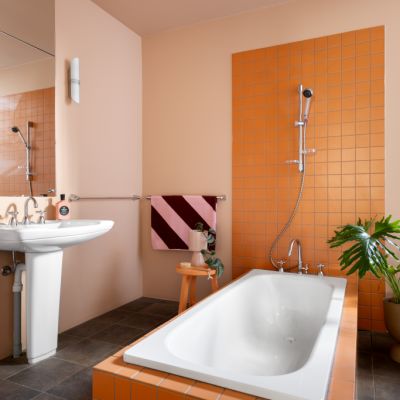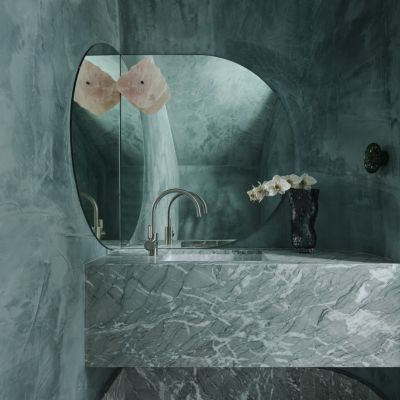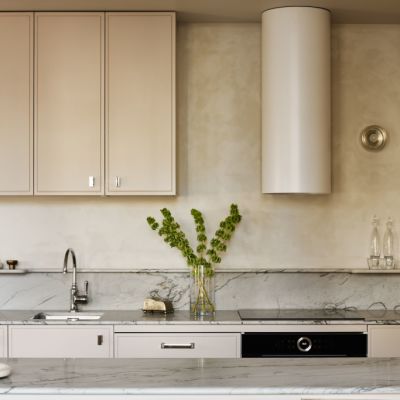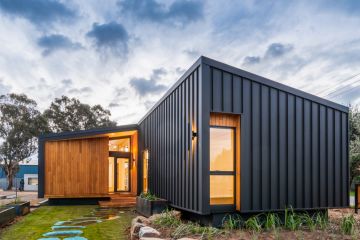Small tiles are taking off in Australia: here's why

Take a quick tour of your home and make a note of the rooms that feature tiles. You’ll quickly discover that tiles feature in the hardest working rooms: the kitchen, the laundry and the bathroom.
This is no accident. Tiles are one of the friendliest surfaces in the home.
They’re easy to clean and get along famously with a sponge and a mop, as well as adding a whole lot of charm to a space. While it’s easy to group tiles together when selecting them for a project, specificity matters – because scale is everything.
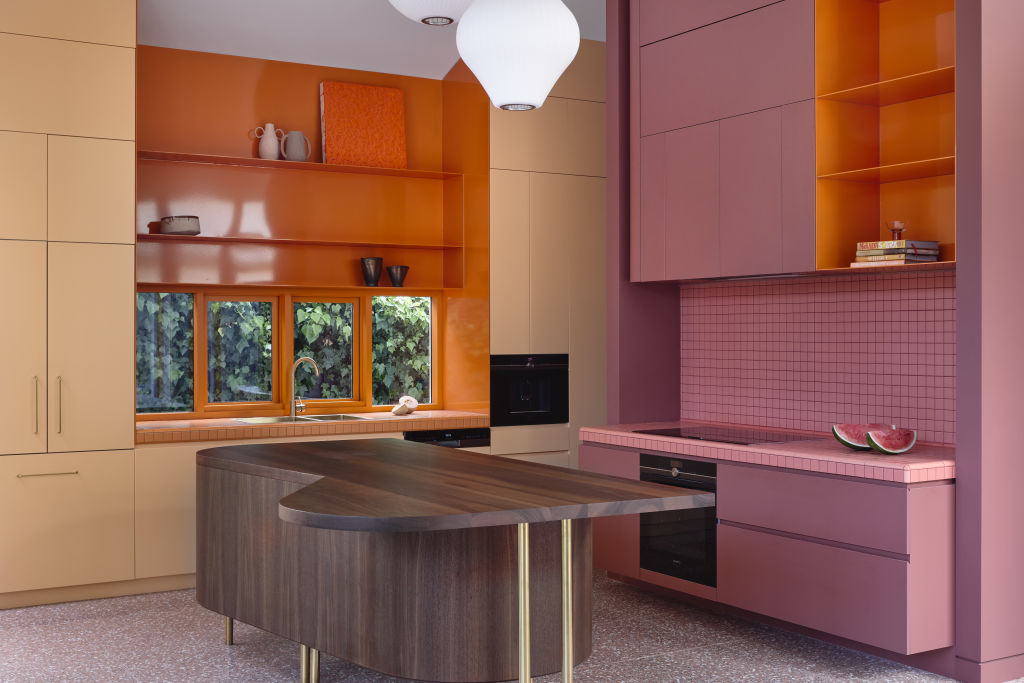
Large tiles can create the illusion of more space and are excellent for covering large floor areas with ease, while medium-sized tiles have versatility on their side and shift between floor and wall applications with true diplomacy.
But it’s the tiny tile which, despite its petiteness, creates the biggest visual impact.
Anouska Milstein, creative director of A.mi, often uses small tiles to bring a decorative element to interior spaces.
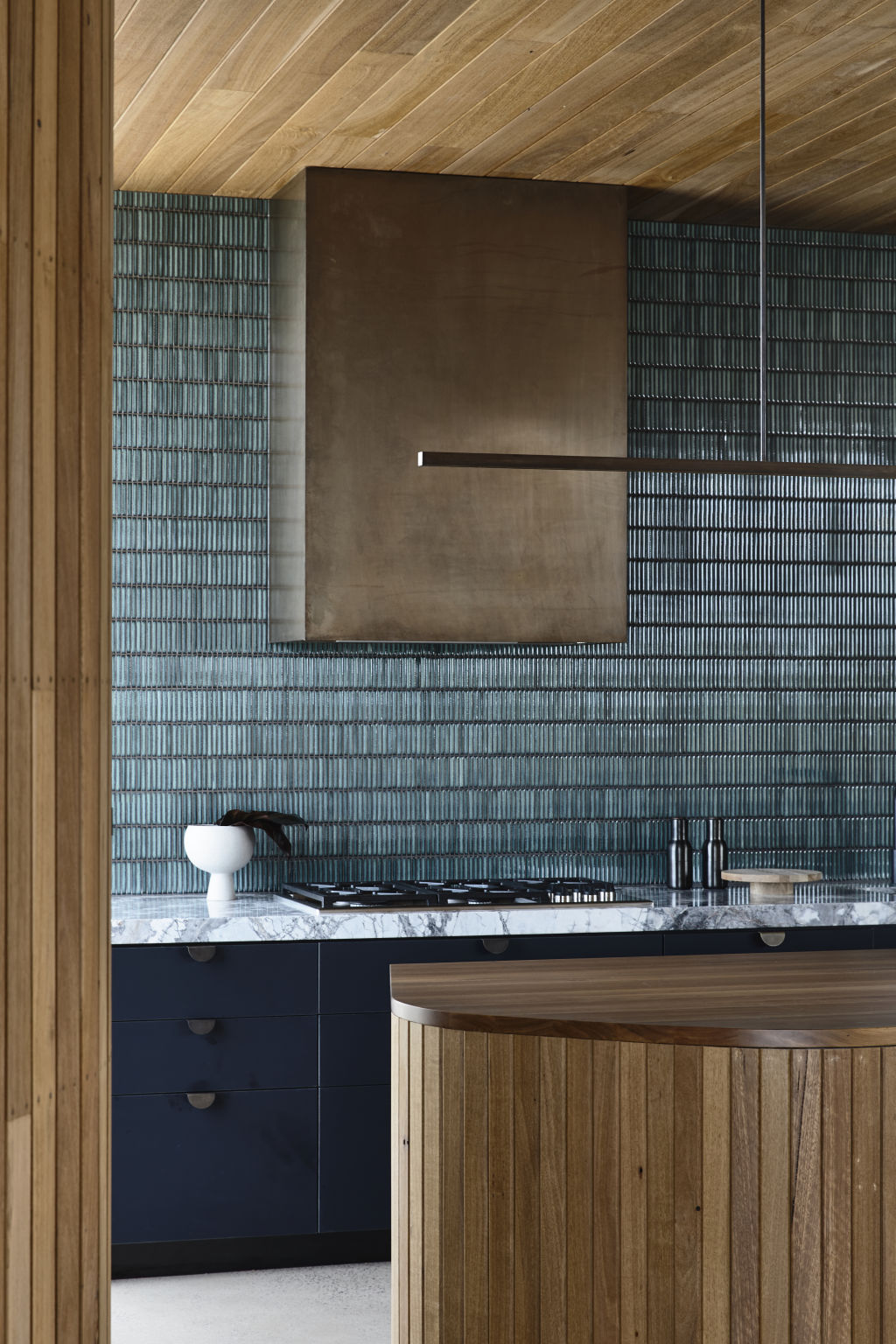
“Small tiles add a beautiful element of character to a space by introducing fine detail and texture to large surface areas,” she says. “Unlike larger tiles, which give more of an impression of pattern, mosaics act as a device to create texture upon a surface, creating just enough visual interest for one’s eye to linger longer.”
Design director of Architect George Cameron Deynzer knows too well the positive impact a small-scale tile can have, and he used them consistently throughout a residential project in Narrawallee Beach, NSW.
The colourful home’s tonal palette references the local beach, giving each room a distinctive look: sandy-yellow in the kitchen, green reflective hues of the ocean in the bathroom, and blush tiles akin to a sunset in the laundry.
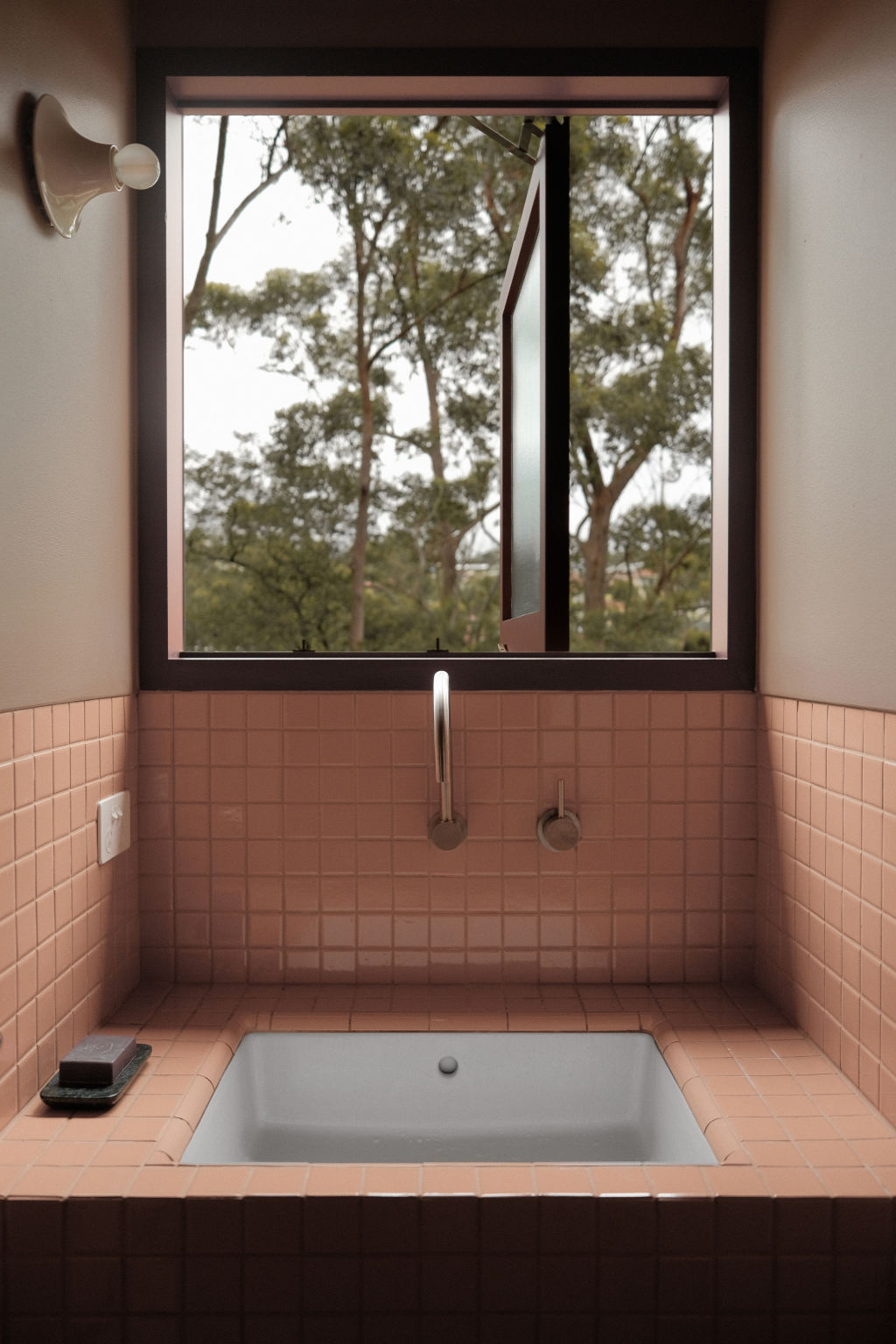
The home features a variety of tile sizes throughout the project – 23mm x 23mm, 50mm x 50mm and 100mm x 100mm – and the Architect George team explains the various scales, used in conjunction with each other, help break up monotonous masses of a single surface. This application was used in both the kitchen and bathrooms.
“Small-scale tiles in the kitchen are more playful, and the colour-matched grout allowed a smooth transition between different formats used,” explains Deynzer, who used 100mm x 100mm tiles on the benches and 50mm x 50mm tiles on the walls and splashback.
Milstein agrees that combining different scales creates a lasting impact when tiles are used in interior settings.
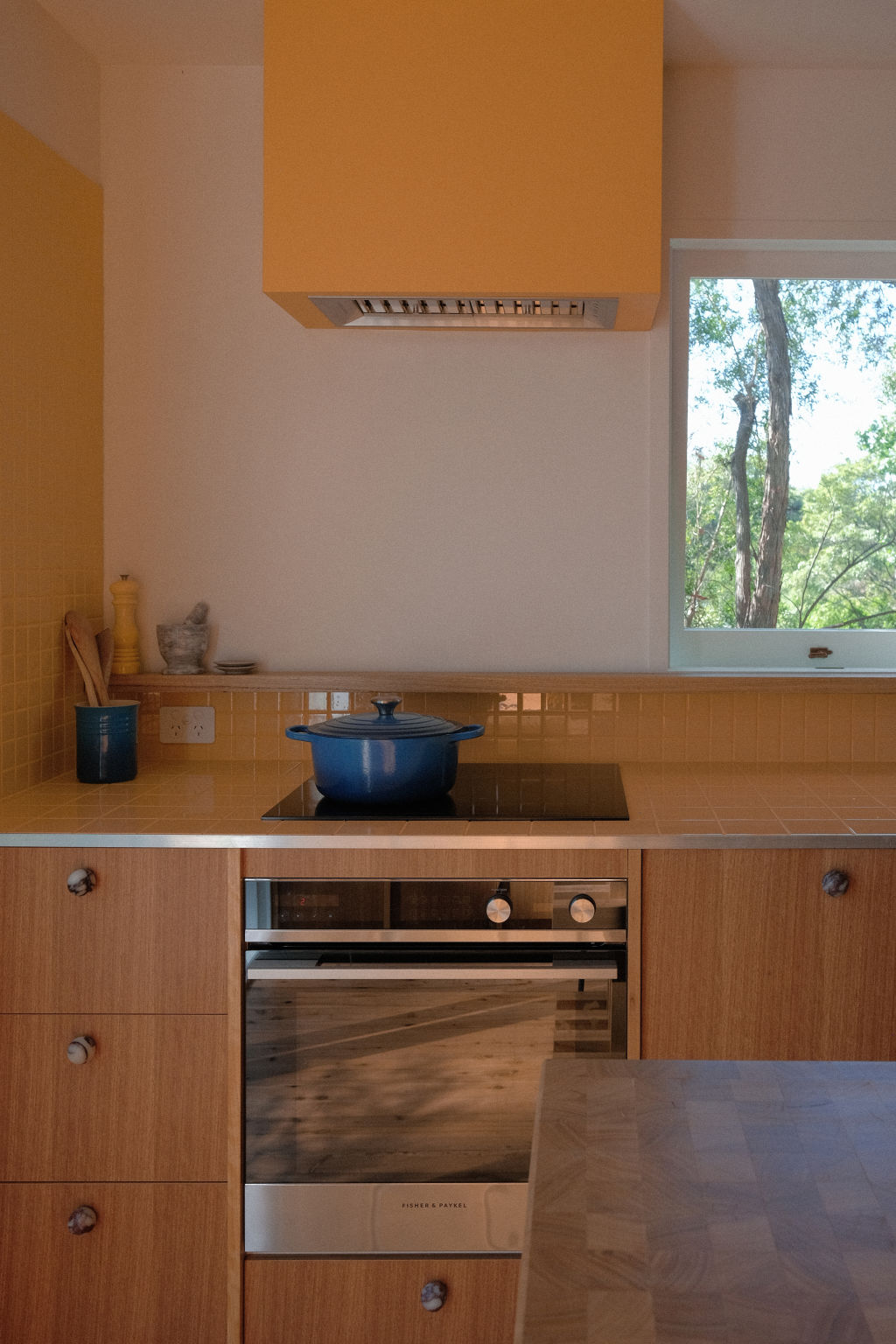
“Experimenting with different sizes of tiles within the same space is a great way to create a visual hierarchy, guiding occupants through a space as you would like them to experience it,” she explains. “Mosaic tiles are perfectly suited for rounded forms like curved walls, which can then be contrasted against large format floor tiles for simplicity and an interesting shift in scale.”
Architect George also incorporated small tiles to bring both cohesion and a point of difference to the home’s colour-soaked rooms.
“When we select small format tiles we are seeking a lot of texture and character in that surface,” says Deynzer. “Each space is given definition and personality with the use of colour, while the size, shape, format helps link the spaces together and gives the home some consistency.”
Outside of this project, Deyzner often uses tiny tiles throughout Architect George projects because the smaller format, especially mosaic tiles, often offers more variety and experimental patterns and finishes.
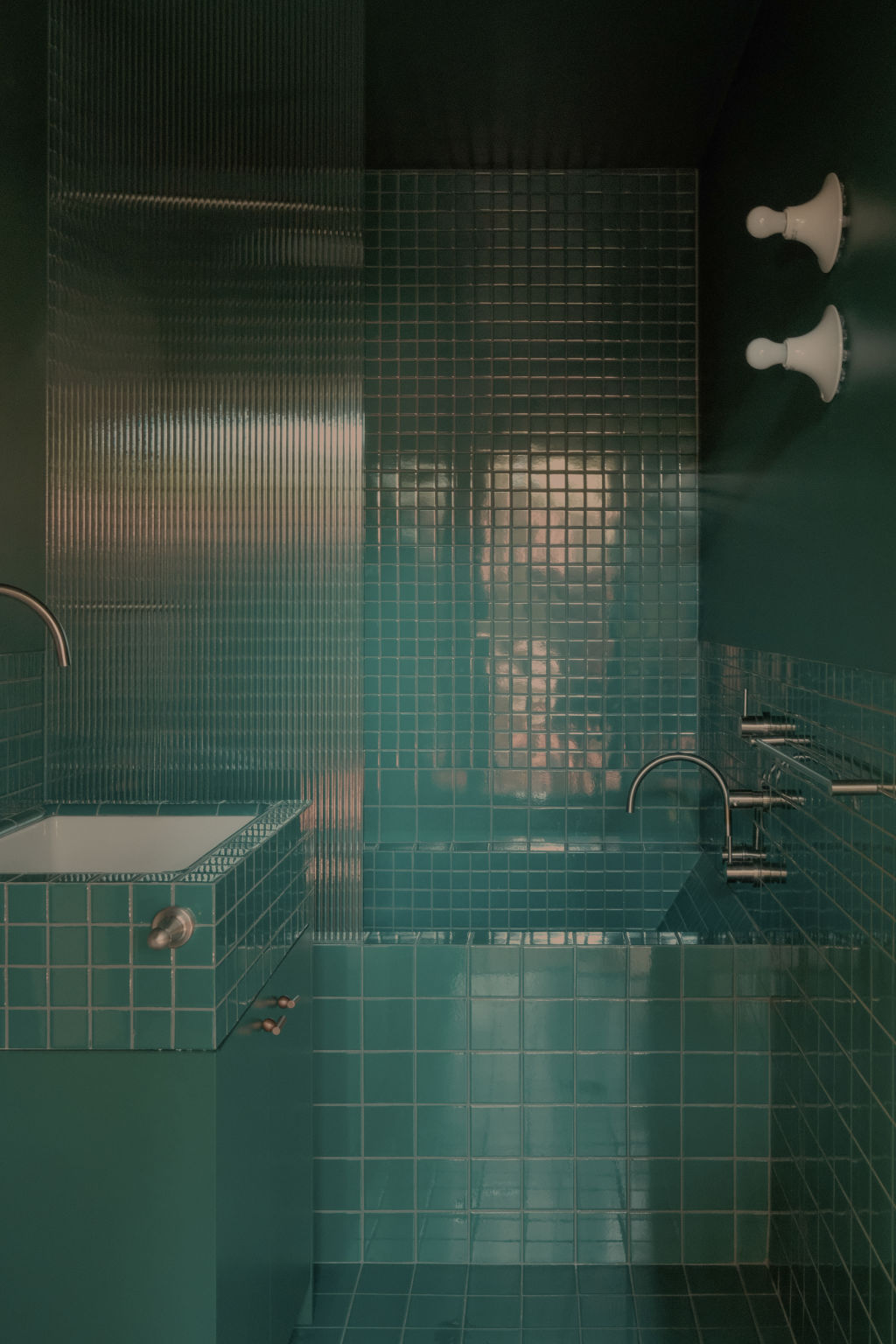
Beyond their beauty, there is also a practical element to smaller tiles that allows them to wrap easily around internal and external corners, which you often find with sinks, baths, and when tiling from the floor to wall.
“This is a special design detail but also a practical detail for cleaning tough to get to corners and grout lines,” explains Deyzner. “The very small format also means more grout which also means a higher slip resistance.”
We recommend
We thought you might like
States
Capital Cities
Capital Cities - Rentals
Popular Areas
Allhomes
More
